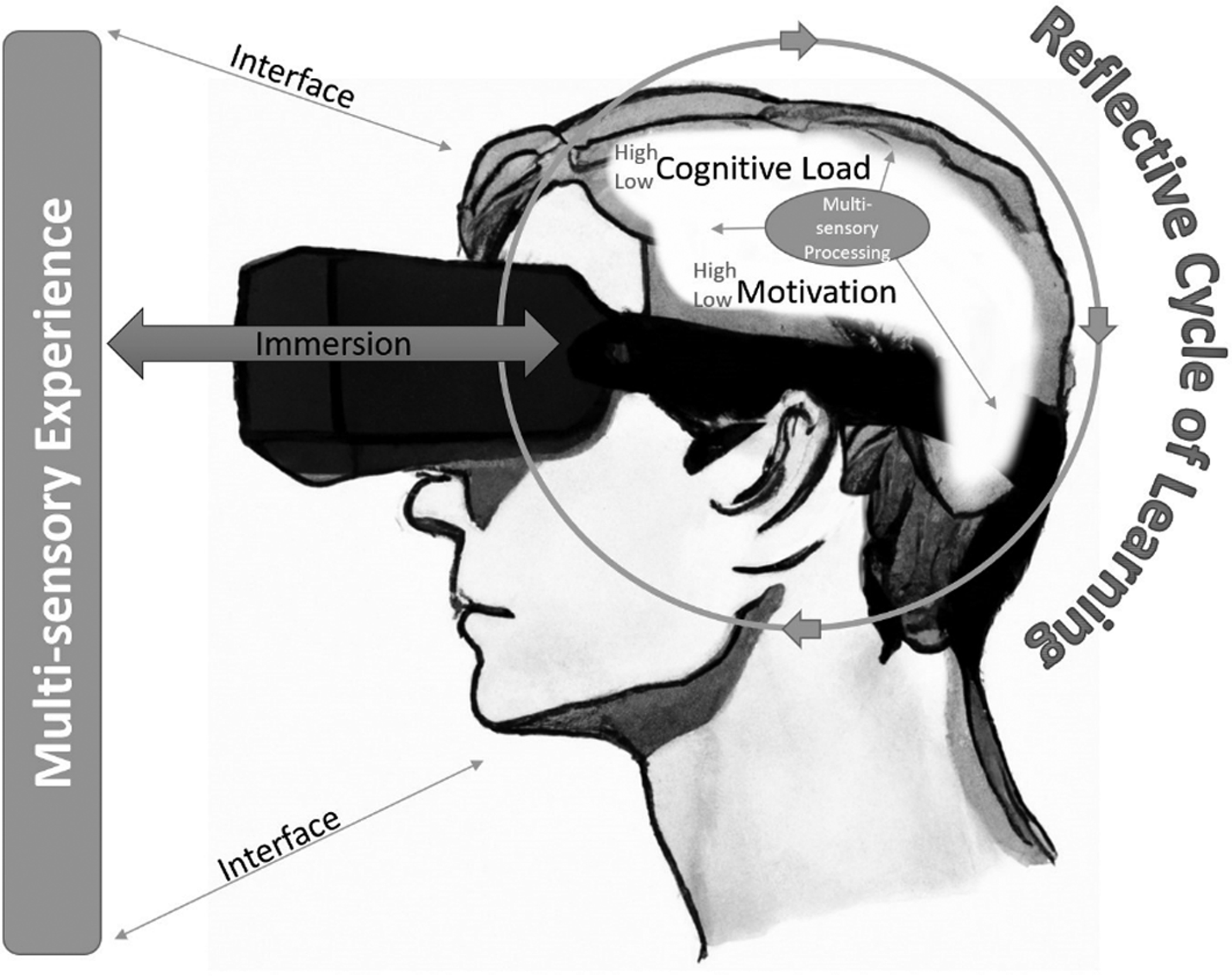
A scoping review identified a significant growth in research with immersive technology in healthcare education. However, there are few validated measures that capture the user experience of participants [1]. This study aims to investigate the use of an immersive virtual reality (VR) simulation on sepsis management and measure user experience using a validated tool, the Immersive Technology Evaluation Measure (ITEM) [2]. ITEM was formulated on a learning theory called Model for Immersive Technology in Healthcare Education (MITHE), which borrows cognitive and behavioural theories to help explain our level of immersion and enjoyment that can be facilitated by technology (see Figure 1-A9).


This single-study quasi-experimental investigation was conducted at a single site. Nine participants were recruited, consisting of medical students and healthcare professionals. Participants were trained on varied immersive devices: sepsis management using an immersive VR simulation developed by Gogglemind, and augmented reality (AR) holographic patient with respiratory distress, which included realistic patient scenarios and interactive decision-making. User experience was measured using the ITEM, which assesses user; immersion, cognitive load, intrinsic motivation, debrief and technology usability.
Nine participants had high levels of immersion (mean 39.6, total 50), high levels of intrinsic motivation (mean 39.6, total 50), high technology score (mean 79.4, total 100), optimum cognitive load (average 59.5, optimum 39–61) and moderate score on debrief (mean 18.1, total 25). ITEM subscores indicated an enjoyable and immersive experience with good technology interface on usability scores. Self-directed debrief in VR had lower scores with emotional considerations and identifying domains of performance and learning.
The use of the ITEM provided valuable insights into the user experience of the VR simulation, which can be used to improve the design and implementation of future simulations. This contributes to an ongoing ITEM validation process. This study highlights the importance of training in healthcare and the potential benefits of using immersive technologies such as VR and AR simulations.
Authors confirm that all relevant ethical standards for research conduct and dissemination have been met. The submitting author confirms that relevant ethical approval was granted, if applicable.
1. Jacobs C, Foote G, Joiner R, Williams M. A narrative review of immersive technology enhanced learning in healthcare education. International Medical Education [Internet]. 2022;1(2):43–72.
2. Jacobs C, Foote G, Williams M. Evaluating user experience with immersive technology in simulation-based education: a modified Delphi study with qualitative analysis. bioRxiv; 2022.